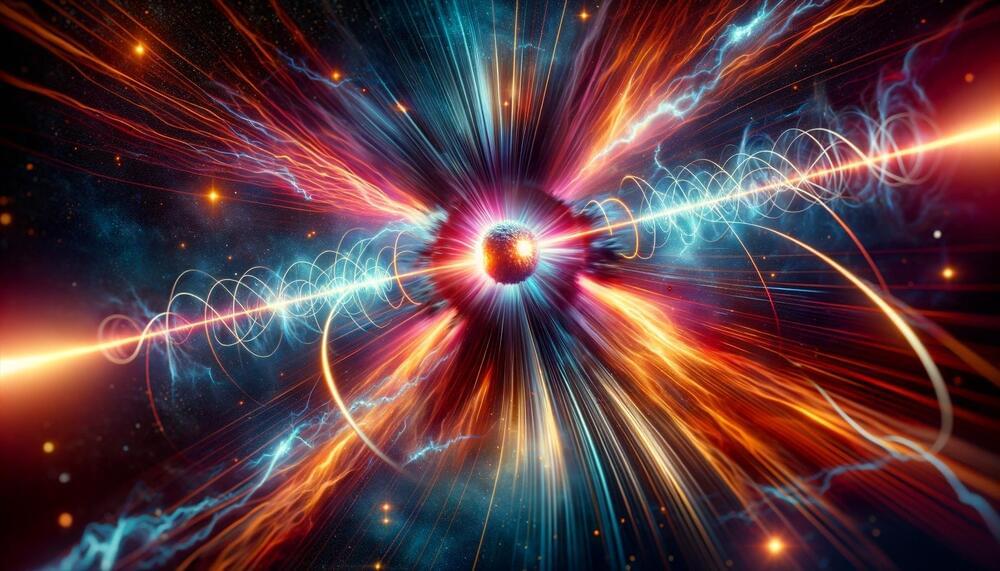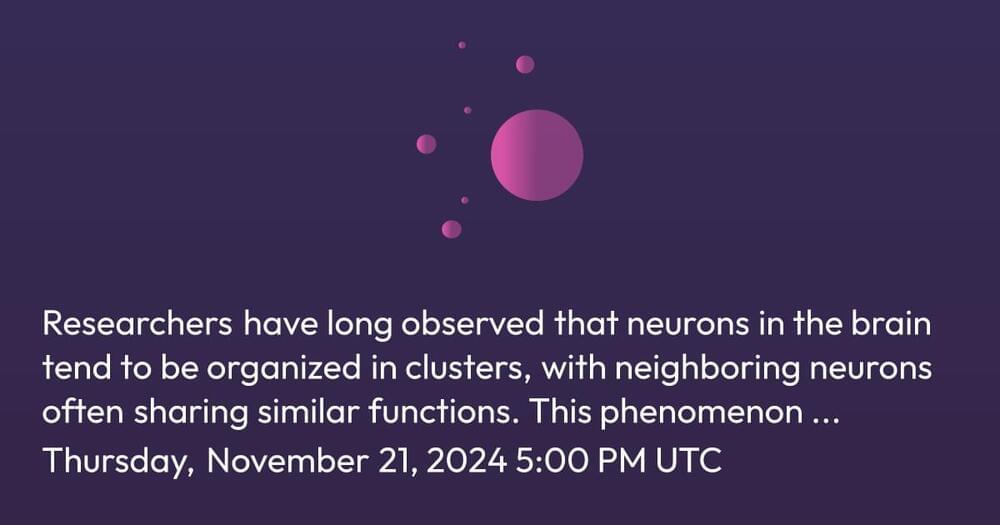Join me on facebook http://www.facebook.com/pages/TheScienceFoundation/277697568961708Cosmos: A Personal Voyage is a thirteen-part television series written…
Category: space – Page 157

Mystery Solved: Magnetars in Massive Galaxies Behind Cosmic Radio Flashes
Researchers have linked the origins of fast radio bursts to magnetars, highly magnetized neutron stars, which often arise from the mergers of massive stars in star-forming galaxies.
By utilizing the Deep Synoptic Array-110, they’ve localized 70 FRBs, discovering that these bursts are more frequent in massive, metal-rich galaxies. This suggests that the environmental conditions conducive to FRB occurrence are also ideal for magnetar formation.
Unveiling the mystery of fast radio bursts.

TopoLM: brain-like spatio-functional organization in a topographic language model. Researchers have long observed that neurons in the brain tend to be
Join us at ploutos.dev.
#AI #topology #language #computation #neuroscience
Researchers have long observed that neurons in the brain tend to be organized in clusters, with neighboring neurons often sharing similar functions. This phenomenon is also seen in the brain’s language system, where certain areas respond to different aspects of language, such as syntax (sentence structure) or semantics (meaning). However, the exact mechanisms behind this organization remain a mystery.
In an attempt to better understand how the brain organizes language processing, the researchers developed TopoLM, a new type of AI language model inspired by the brain’s spatial layout. Unlike traditional language models, TopoLM arranges its processing units in a two-dimensional space, mimicking how neurons are arranged in the brain. It combines a standard language task (predicting the next word in a sentence) with an additional goal: encouraging units that are close together in space to also have similar functions, creating clusters of units that process similar linguistic information.
The result is a model whose internal organization closely mirrors the way the human brain organizes language. TopoLM successfully predicts the emergence of clusters in the brain’s language system, reflecting the same fine distinctions between different linguistic features observed in humans. This suggests that the brain’s language processing might be driven by a unified spatial principle, and TopoLM provides a new way to model how our brains process language both functionally and spatially.
Speakers: Cecile Tamura, Johannes Mehrer, Riju Pahwa

Hubble’s Night Sky Challenge
Do you have a telescope? Would you like to see some of the same night sky objects from the ground that Hubble has from space? We invite you to commemorate Hubble’s 35th anniversary by accepting our year-long stargazing challenge. On a clear night, find a safe location with a dark sky away from bright lights, point your telescope skyward, and with the help of star and finder charts, gaze upon some of the same iconic nebulae and galaxies Hubble has observed. How many of them can you find?

Hypervelocity Object Breaks Free From The Milky Way, Racing At 1 Million MPH
CWISE J1249 is the first known brown dwarf-like object to leave the Milky Way.
While stars typically follow predictable paths around the Milky Way, a groundbreaking discovery revealed a hypervelocity object, CWISE J124909.08+362116.0, speeding out of the galaxy at nearly 1 million miles per hour. This remarkable find, credited to NASA’s Backyard Worlds: Planet 9 citizen science project, marks the first time an object of such low mass, possibly a brown dwarf or small star, has been observed breaking free from the galaxy’s gravitational pull.
Using data from NASA’s WISE (Wide-field Infrared Survey Explorer) mission, citizen scientists identified the faint, fast-moving object. Initial observations from 2009–2011, followed by confirmations using ground-based telescopes, led to this discovery. The study, now published in the Astrophysical Journal Letters, underscores the power of citizen science in advancing astronomical research.

Theoretical astrophysicist proposes solution to enigma of Crab Nebula’s ‘zebra’ pattern
A theoretical astrophysicist from the University of Kansas may have solved a nearly two-decade-old mystery over the origins of an unusual “zebra” pattern seen in high-frequency radio pulses from the Crab Nebula.
His findings have just been published in Physical Review Letters.
The Crab Nebula features a neutron star at its center that has formed into a 12-mile-wide pulsar pinwheeling electromagnetic radiation across the cosmos.

Ancient Moon Volcanoes Discovered: Chang’e-6 Sheds Light on Lunar Mysteries
New findings from basalt samples retrieved by China’s Chang’e-6 mission reveal that volcanic activity on the Moon’s farside dates back between 4.2 and 2.8 billion years.
This research provides key insights into the lunar geological dichotomy and aids in the precision of lunar dating methods.
Lunar Farside’s Volcanic History Revealed.

Statistical approach improves models of atmosphere on early Earth and exoplanets
As energy from the sun reaches Earth, some solar radiation is absorbed by the atmosphere, leading to chemical reactions like the formation of ozone and the breakup of gas molecules. A new approach for modeling these reactions, developed by a team led by scientists at Penn State, may improve our understanding of the atmosphere on early Earth and help in the search for habitable conditions on planets beyond our solar system.
The researchers have reported in the journal JGR Atmospheres that using a statistical method called correlated-k can improve existing photochemical models used to understand conditions on early Earth.
The approach can help scientists better understand the atmospheric composition of early Earth and will play an important role as new observatories come online in the coming decades that can provide new data on exoplanet atmospheres, the scientists said.

